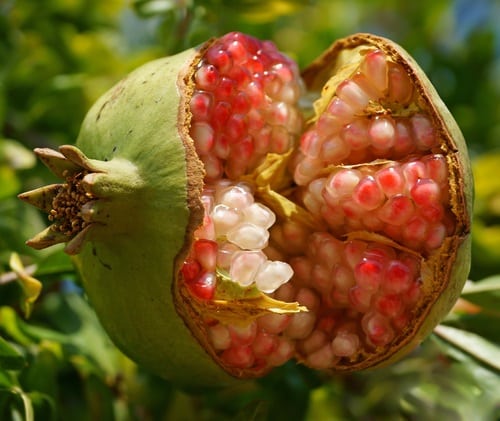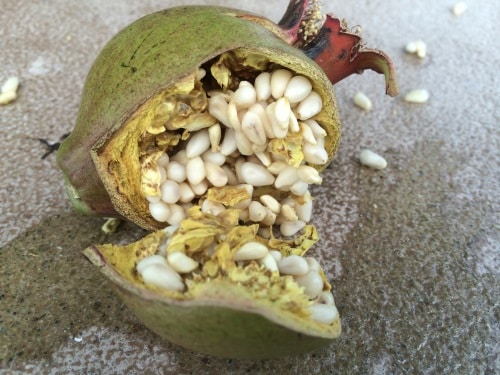
Pomegranates – a delicious, healthy, beautiful-looking fruit. What more could you want? They offer a blend of sweetness and acidity that works well in so many dishes from Persian savory rice to fruity desserts to salads.
Most of us are used to seeing red-skinned and seeded pomegranates but did you know that there is such a thing as white pomegranates? Read on to find out more about this fascinating, rare fruit.
Why Are My Pomegranate Seeds White?
Where Do White Pomegranates Come From?
White pomegranates are a rare variety of red fruit. They are a natural mutation and lack color because they lack anthocyanins – those pigments in the arils and seeds that create the ruby red color.
This is why your pomegranate seeds are white. When these beautiful creamy pale fruits were discovered, farmers bred them purposefully for their sweet seeds and pearly color.
What Types Are Available?
Globally, there are several cultivars of pomegranates with white skin and flesh. Namely, Paper Shell, Spanish Sweet, and Muscat White.
They are rare, comprising less than 10 percent of the pomegranate market. Chefs and home cooks value them for their sweet taste and decorative properties.
How Are They Different?
Besides the obvious color difference, white pomegranate seeds are different to the red varieties in other ways. The arils are sweeter and there’s less acidity present. The white arils and membranes are softer.
Are White Pomegranate Seeds Rotten?
No. As you can see, these seeds are simply white because they are from a different variety of pomegranates. Rotten pomegranates of either color will smell fermented and will have a bad taste. The interior of the fruit will often be brown if it’s off.
Proper Selection And Storage Of Pomegranates
Whichever variety you choose, always look for fruits with a firm exterior and bigger size. The larger size is a sign of ripeness and well-developed arils.
Pick fruits that feel heavy for their size as they will be juicy. Avoid shriveled, dry-looking fruits with bruises and cracks.
Once you get these special fruits home, they may be stored at room temperature for about a week. If refrigerated, they will last for up to two weeks.
How To Use White Pomegranate Seeds
Now that we have established that white pomegranate seeds are yummy and also good for you, here’s how to use them.
The edible parts of this fruit is the tiny seeds and the juicy fruit around them (called the aril). Using a sharp knife, cut open the hard outer shell and remove the arils from the membrane.

There are several methods of doing this so look for videos online. The easiest and least messy method is to put the opened pomegranate into a dish of water.
The edible parts will sink while the pithy white membrane will float. Skim this off the top with a slotted spoon and drain the water off using a colander.
You can now use the arils in smoothies, sprinkled onto salads, in savory rice dishes, or in your breakfast yogurt. If you have a dehydrator, you can dry them and use them as snacks or add them to muesli or trail mixes.
To Conclude
We hope this has set your mind at ease about why your pomegranate seeds are white. Remember to look out for this sweet and pretty variety next time you are at the market.
